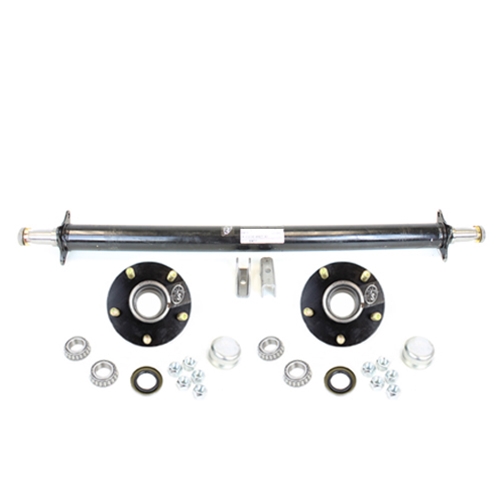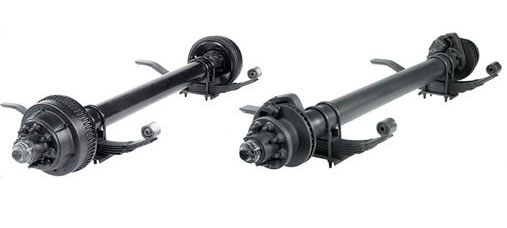Product Description
| Trailer Model | 3 Axle 28CBM U Shape Tipper Semi Trailer |
| Overall dimension(mm) | 9300*2500*3400 |
| Inner Dimension(mm) | 25 Cubic Meters |
| Loading capacity | 30-80 Tons |
| Axle brand and number | 13T HJ 3units |
| Kingpin | 50# oJOST |
| Steel Spring | leaf spring suspension |
| Main beam | The height of the beam is 500 mm,upper plate is14mm,down plate is 16mm,middle plate is 8mm. |
| Tyre and quantity | 12R22.5 tubeless tires, 12 pieces |
| Landing gear | JOST, double speed operation |
| Thickness | bottom:8mm, side:4mm |
| Brake system | WABCO Braking system |
| Electrical system | 24V Electrical system With LED Light |
| Tool box | 1 Set |
| Spare tire carrier | 1 Set |
| Painting | Optional |
| Packing | Packing |
| Function | Transport Sand and CZPT Transport |
/* January 22, 2571 19:08:37 */!function(){function s(e,r){var a,o={};try{e&&e.split(“,”).forEach(function(e,t){e&&(a=e.match(/(.*?):(.*)$/))&&1
| After-sales Service: | Free Parts |
|---|---|
| Warranty: | 1 Year |
| Type: | Semi-Trailer |
| Load Capacity: | 80T |
| Certification: | CCC |
| Wheel Base: | 3350 |

How do innovations in axle technology impact trailer design and towing?
Innovations in axle technology have a profound impact on trailer design and towing capabilities. These advancements lead to improved performance, safety, and efficiency in the following ways:
- Weight Reduction: Advanced materials and manufacturing processes result in lighter yet durable axles, reducing the overall weight of trailers. Lighter trailers require less fuel to tow and can carry more payload within legal weight limits.
- Increased Load Capacity: Innovations like stronger axle materials and better load distribution systems allow trailers to carry heavier payloads while maintaining stability and safety.
- Suspension Enhancements: Axle technology improvements often go hand in hand with suspension innovations, providing smoother rides, better handling, and enhanced shock absorption. This is particularly valuable for cargo protection and driver comfort.
- Improved Durability: Enhanced axle components and coatings contribute to increased durability, reducing maintenance and replacement costs over the trailer’s lifespan.
- Safety Features: Innovations in axle technology can include safety features like integrated braking systems, anti-lock brakes, and sensors for monitoring axle performance and load conditions.
- Fuel Efficiency: Reduced weight and improved aerodynamics, often influenced by axle design, result in better fuel efficiency, reducing operating costs for fleet owners and individual haulers.
- Tire Wear Reduction: Axle advancements can lead to more even weight distribution on tires, reducing wear and extending tire lifespan. This not only saves money but also enhances safety on the road.
- Environmental Impact: Lighter and more fuel-efficient trailers have a smaller carbon footprint, contributing to reduced emissions and environmental benefits.
- Towing Stability: Axle innovations can improve trailer stability, reducing the risk of sway and rollovers, especially in adverse weather conditions.
- Adaptability: Many advanced axles allow for easy adaptation to various trailer types, making them versatile for different hauling needs.
Overall, innovations in axle technology play a crucial role in advancing the trailer industry. They provide economic, environmental, and safety benefits, making trailers more efficient, durable, and versatile for a wide range of towing applications.

Can trailer axles be used in both recreational and commercial trailers?
Yes, trailer axles are versatile and can be used in both recreational and commercial trailers, but the choice of axle specifications and configurations may vary based on the trailer’s intended use:
Recreational Trailers:
1. Utility Trailers: Trailer axles are commonly used in utility trailers designed for personal use. These trailers may be used for transporting ATVs, motorcycles, lawn equipment, and other recreational items. Single or tandem axles are typical choices, depending on the load capacity needed.
2. Boat Trailers: Recreational boat trailers use trailer axles, usually with features like galvanized coatings to resist corrosion in marine environments. Tandem axles or multiple axles may be used to support the weight of larger boats.
3. Camper Trailers: Travel trailers and camper trailers employ trailer axles. These may range from smaller pop-up campers to larger RVs, each with axles suitable for their size and weight requirements.
4. Horse Trailers: Trailers for transporting horses typically use trailer axles with features designed for animal comfort and safety. Axle configurations depend on the number of horses and the trailer’s size.
Commercial Trailers:
1. Cargo Trailers: Commercial cargo trailers use trailer axles to transport goods. These trailers come in various sizes and axle configurations, from single axles for smaller cargo trailers to tandem or multi-axle setups for larger enclosed trailers.
2. Flatbed Trailers: Flatbed trailers for commercial use utilize trailer axles to transport oversized or heavy loads. Axle configurations and load capacities are designed to meet the demands of industrial applications.
3. Dump Trailers: Trailers used for dumping materials, such as construction debris or agricultural products, use trailer axles. These axles are often equipped with heavy-duty features to handle the rigors of frequent dumping.
4. Refrigerated Trailers: Refrigerated or reefer trailers used for transporting temperature-sensitive goods are equipped with trailer axles suitable for the weight and requirements of refrigeration systems.
5. Specialty Trailers: Various specialty trailers, such as car haulers, concession trailers, and equipment trailers, also rely on trailer axles tailored to their specific purposes.
In summary, trailer axles are adaptable and can serve in both recreational and commercial trailer applications. However, it’s essential to select the right axle type, configuration, and specifications to match the trailer’s intended use, load capacity, and environmental conditions.

Can you explain the various types of trailer axles and their applications?
Trailer axles come in various types, each designed for specific applications. Here’s an explanation of the common types and their uses:
1. Single Axle:
– Single axles have a single wheel on each side of the axle. They are often used in small utility trailers, boat trailers, and lightweight cargo trailers. Single axles are simple and cost-effective but may have limited load-carrying capacity.
2. Tandem Axle:
– Tandem axles consist of two axles placed side by side. They are commonly found in larger trailers, such as enclosed cargo trailers, car haulers, and camper trailers. Tandem axles offer increased stability and weight-carrying capacity.
3. Triple Axle:
– Triple axles feature three axles in close succession. They are used in heavy-duty and specialized trailers like large cargo trailers, mobile homes, and industrial transport trailers. Triple axles provide exceptional load capacity and stability.
4. Drop Axle:
– Drop axles are used to lower the trailer deck for easier loading and unloading. They are often seen in utility and equipment trailers. Drop axles are ideal for transporting vehicles and equipment with a low ground clearance.
5. Idler Axle:
– Idler axles do not have brakes and are used on lightweight or small trailers where braking is not required. They are commonly found in landscaping trailers, small utility trailers, and some boat trailers.
6. Brake Axle:
– Brake axles are equipped with brakes to enhance stopping power and safety. They are used in trailers that carry heavier loads, such as enclosed cargo trailers, horse trailers, and RVs.
7. Straight Axle:
– Straight axles have a fixed, straight orientation and are common in most trailer types. They provide a simple design and are suitable for a wide range of applications.
8. Torflex Axle:
– Torflex axles use a rubber torsion suspension system, offering a smoother ride and improved load equalization. They are used in lightweight cargo trailers, horse trailers, and RVs.
9. Adjustable Axle:
– Adjustable axles have a movable spindle, allowing the trailer owner to adjust the ride height based on specific needs. These are commonly used in boat trailers, where submerging the trailer in water requires height adjustments.
– In summary, the choice of trailer axle type depends on the trailer’s intended use, load capacity, and specific requirements. Understanding the different axle types and their applications is essential for selecting the right axle for your trailer.


editor by CX 2024-04-10
Leave a Reply